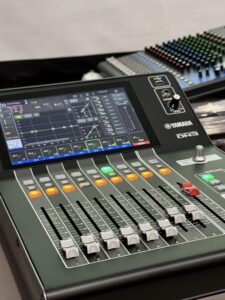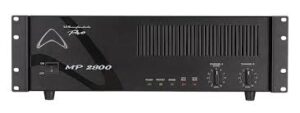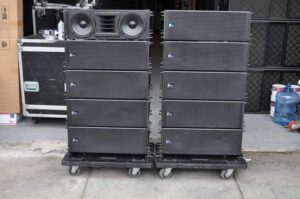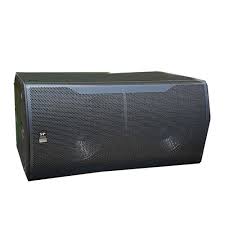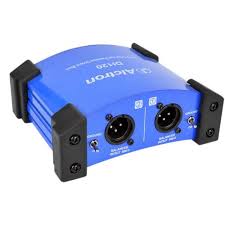Originally posted on December 3, 2024 @ 11:26 am
CONCEPT OF LOUDNESS WAR

The “Loudness War” in digital sound mix describes the trend of increasing the overall loudness of music productions and recordings.
This means that The Loudness war focuses on loudness over “Dynamic Range”, often time at the expense of quality sound.
While Dynamic Range as caption is the difference between the quietness and loudest parts of a track.
But the misconception is that compressing this range allow producers to make music sound louder that it often results in a loss of depth, clarity and emotional impact.
adversely, compression also allow quieter sounds to be heard more clearly while avoiding distortion in louder sound.
Also, Compression can make music sound fuller, but excessive compression can lead to distortion and a loss of dynamics.
Please know that Compression is the technique that levels out peaks and valleys in audio, making the track sound “louder” on average.
LOUDNESS BY COMPRESSION VS SOFTNESS BY COMPRESSION
In digital mixing, engineers choose between these compression concept depending on the desired style and emotional impact of the mix.
Let’s understand the two (2) contrasting concepts of using compression in digital audio mix.
-
Loudness by Compression
It refers to the perceived volume of sound by listeners, often increased through dynamic range compression of an audio track without increasing the peak levels.
This technique is commonly used in genres that require impactful, punchy mixes (like pop, rock, and EDM), where energy and loudness are prioritized.
The phenomenon became prominent in the late 1990s and early 2000s, as advances in digital audio production tools allowed engineers to push the volume of recordings to the limit.
Why do you need Loudness by compression?
By making quieter elements of a track more audible, compression ensures that details are present in the mix. Instruments and vocals do not get lost, which can make a mix sound fuller and more cohesive.
Why you do not need Loudness by compression!
Continuous exposure to highly compressed music can lead to “listener fatigue.” When all parts of a song are pushed to sound equally loud, the ear can become overwhelmed, making it tiring to listen for extended periods.
-
Softness by Compression
It is when you apply more subtly to maintain a natural, smooth feel in the audio by controlling only the loudest peaks without heavily compressing the overall signal.
This method preserves more of the natural dynamics and character of the sound.
The softness technique is often used in genres where a relaxed, open dynamic range is preferred such as jazz, classical, and acoustic music, where listeners appreciate the delicate nuances of each instrument.
The Beauty of using Softness by compression IN LOUDNESS WAR
Softness by compression keeps the original dynamics intact, allowing softer and louder parts to breathe and improved sound quality and clarity.
Why do you have to look away from Softness by DYNAMIC compression?
In a complex or dense mix, quieter elements in a track can get lost if the track lacks strong compression.
This will make some parts of your track less audible on lower-quality speakers
Yes, there are both advantages and disadvantages to using both approaches in digital mixing.
They are both popular techniques, especially in modern music but you have to trade with care to reach out to your audience the best form to desire more of your mix.
Let’s take a ride into its
- Root cause;
- Feedback mechanisms of Loudness War and;
- Best remedies to avoid Loudness war
ROOT CAUSE OF THE LOUDNESS WAR
- Misguided perception of Quality Sound: Music producers realised that louder tracks stood out more on the radio and music charts.
- Competitive Market Pressures: As CDs and digital music became the primary mediums for music consumption, producers and record labels began competing for attention. A louder song would stand out more, particularly in radio and streaming playlists, encouraging labels to prioritise loudness to catch listeners’ ears.
- Audio Tools: Likes of limiters and compressors which gives rooms for engineers to increase perceived loudness without noticeable clipping.
PLEASE NOTE: Dynamic compression – The main tested way to increase the overall volume of recordings.
5 FEEDBACK MECHANISMS THAT BEST CURE THE LOUDNESS WAR
- Audiophiles –
As music listeners became more aware of the loudness war, it resulted to pushback, particularly from audiophiles and music critics who value sound quality over sheer loudness.
- Streaming and Normalization –
Some platforms automatically adjust playback levels to avoid jumps in loudness between tracks, reducing the incentive to make songs artificially louder.
Example includes Spotify, Apple Music, and YouTube. Etc. This has encouraged some producers to focus on sound quality rather than loudness.
- Artist and Producer Shifts –
Artists and producers in genres; jazz and classical, embraced greater dynamic range in recordings as a mark of quality.
This approach has gained traction even in mainstream pop, with more producers prioritizing for clarity and depth.
- Technical Advancements –
Enhanced digital audio technologies and better mastering plugins give producers more control over how sound translates across different listening environments, enabling quality production without excessive loudness.
- Listener Experience –
This mechanism promoted advocacy for balancing ensuring tracks are engaging without causing discomfort/tiring the listener over time.
2 BEST REMEDIES TO IMPROVE LOUDNESS WAR FOR CLEARER AND QUALITY SOUND.
Interestingly, modern streaming platforms like Spotify and Apple Music as mentioned above now try to normalize the loudness of tracks.
But, excessive loud tracks are not automatically favoured, potentially signalling the end of Loudness War.
Some mastering engineers and artists are pushing for a return to greater dynamic range, advocating for sound quality over sheer volume.
Audiophiles and producers alike are now rethinking this approach, focusing on delivering a more balanced, high-quality sound. Therefore, the remedies include;
- Digital Audio Workstations (DAWs): The rise of DAWs and other digital tools allowed engineers to manipulate audio with precision.
This made it easier to push tracks to higher loudness levels without necessarily clipping or distorting.
- Listener Preferences and Formats: It enables streaming platforms became popular from high-quality headphones to phone speakers.



